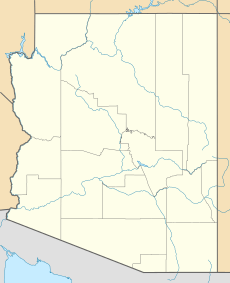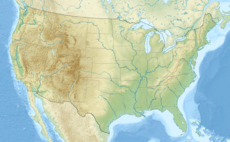Elaine Castle facts for kids
Quick facts for kids Elaine Castle |
|
|---|---|
| Highest point | |
| Elevation | 7,431 ft (2,265 m) |
| Prominence | 691 ft (211 m) |
| Isolation | 5.38 mi (8.66 km) |
| Parent peak | Kaibab Plateau (9,220 ft) |
| Geography | |
| Location | Grand Canyon National Park Coconino County, Arizona, US |
| Parent range | Colorado Plateau |
| Topo map | USGS King Arthur Castle |
| Geology | |
| Age of rock | Permian |
| Type of rock | sandstone |
| Climbing | |
| First ascent | Puebloans |
| Easiest route | South side class 3 scrambling |
Elaine Castle is a tall mountain peak in the amazing Grand Canyon. It stands 7,431 feet (about 2,265 meters) high. You can find it in Coconino County, in northern Arizona, USA.
It's located about three miles north of King Arthur Castle. It's also close to Shinumo Creek and Lancelot Point. This peak rises very steeply. It goes up 2,800 feet (850 meters) from Merlin Abyss in just one mile! Elaine Castle is in a cold semi-arid climate zone. This means it's usually dry and can get quite cold.
History of Elaine Castle
Clarence Dutton started a cool tradition. He began naming places in the Grand Canyon after famous heroes and gods from old stories. Elaine Castle got its name from a Welsh mapmaker named Richard Tranter Evans. He lived from 1881 to 1966.
Evans named the peak after Elaine of Astolat. She is a character from the Legend of King Arthur. Many other places nearby also have names from Arthurian legends. Some examples are King Arthur Castle, Guinevere Castle, Excalibur, and Holy Grail Temple.
The name "Elaine Castle" was officially accepted in 1908. This was done by the United States Board on Geographic Names.
Donald Davis climbed Elaine Castle on June 27, 1969. He built a small pile of stones, called a cairn, at the top. But he wasn't the very first person there. He found signs that Native Americans had been there before him. Another climber, Harvey Butchart, reached the top on August 9, 1969. He found the cairn that Davis had built.
What Elaine Castle is Made Of (Geology)
Elaine Castle is a type of mountain called a butte. A butte is a tall, flat-topped hill with steep sides. The very top of Elaine Castle is made of hard rock called Toroweap Formation. This rock formed during the Permian period.
Below this top layer is cream-colored Coconino Sandstone. This sandstone is the third-youngest rock layer in the Grand Canyon. It formed about 265 million years ago from ancient sand dunes.
Underneath the Coconino Sandstone is a reddish layer called Hermit Formation. This also formed during the Permian period. Even further down, you'll find the Supai Group and the Redwall Limestone. The very bottom layers are from the Cambrian period, called the Tonto Group.
Elaine Castle stands out because of natural cracks in the rock, called fracture lines. Rainwater that falls on Elaine Castle flows south. It goes into Shinumo Creek, which eventually reaches the mighty Colorado River.



